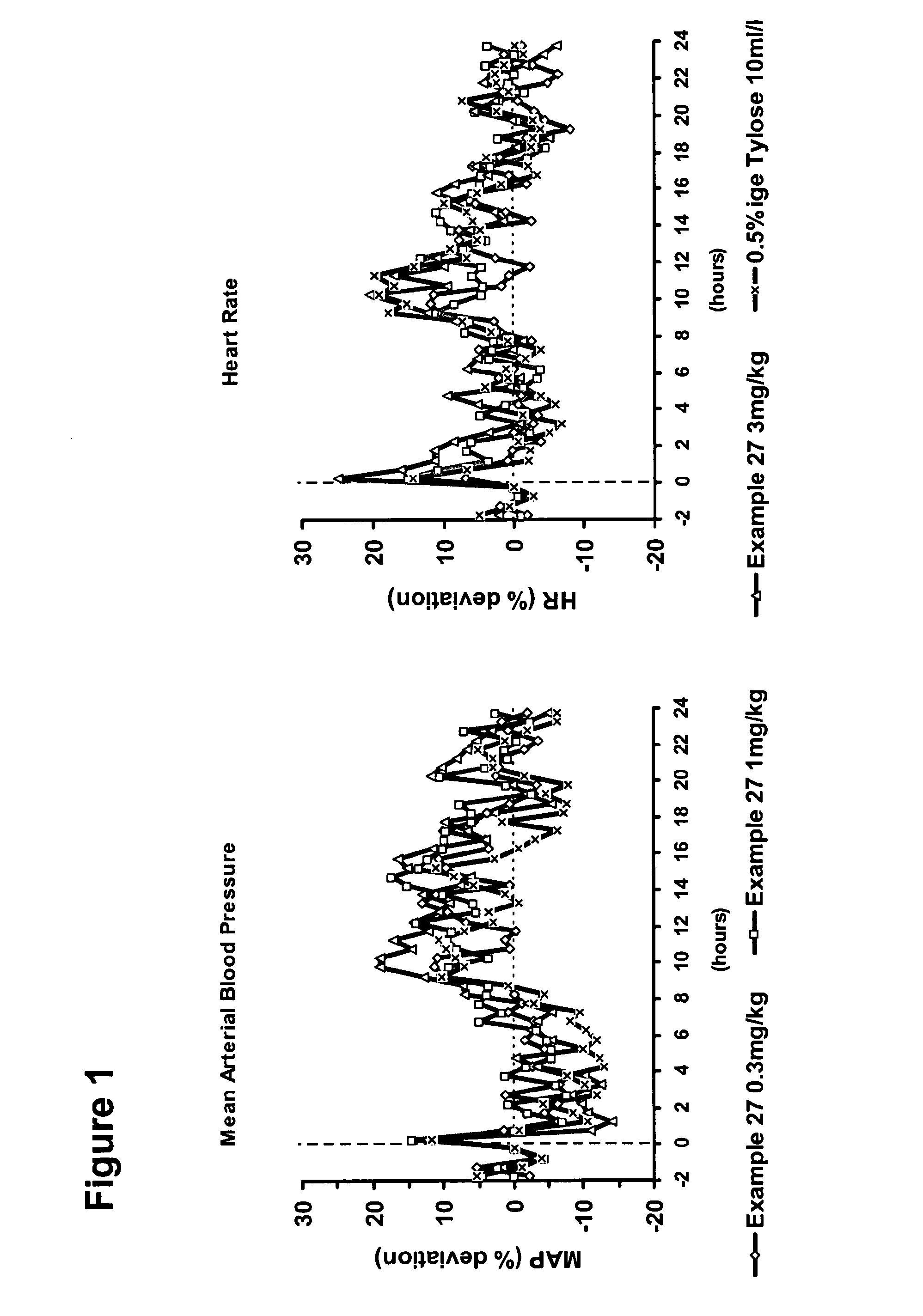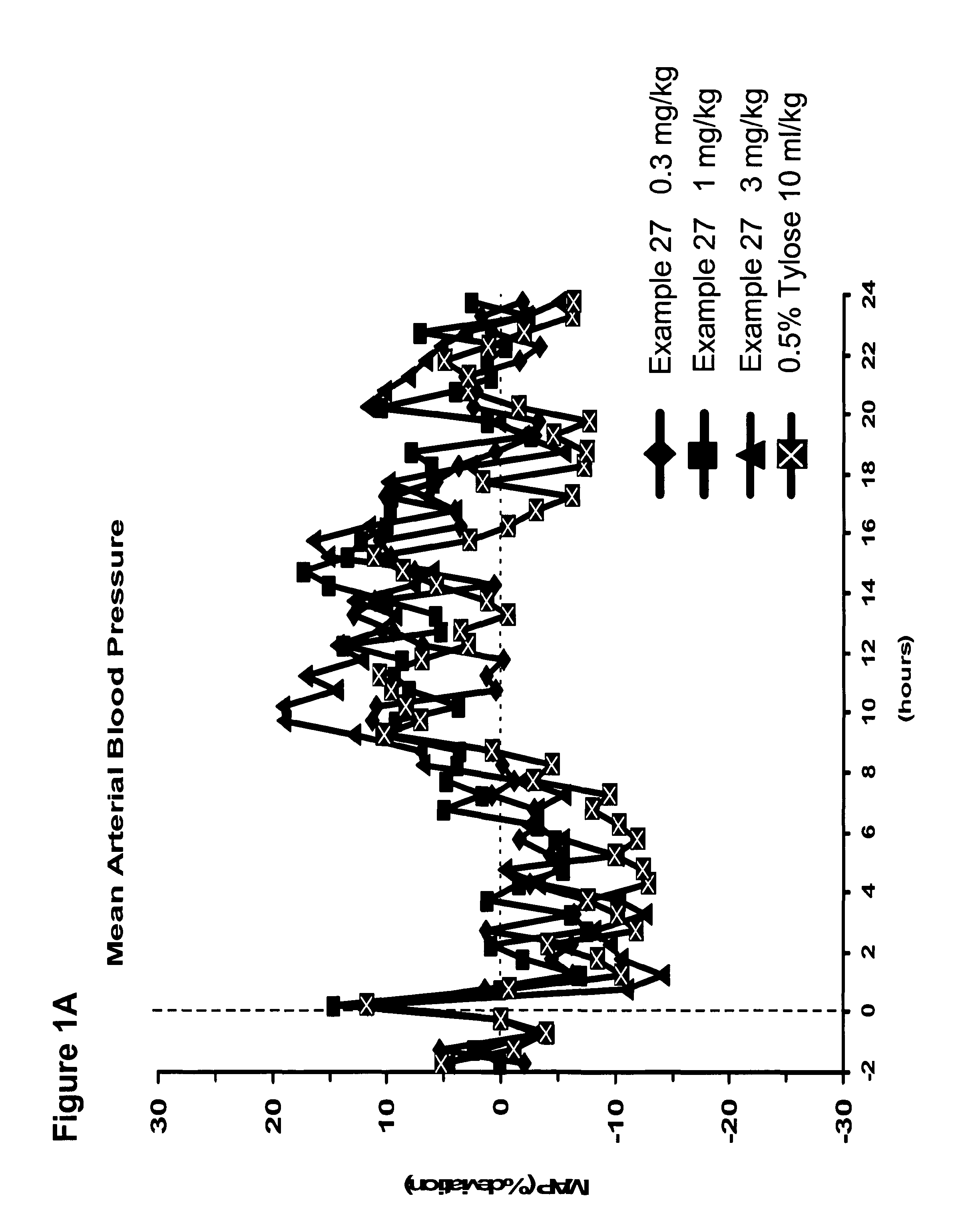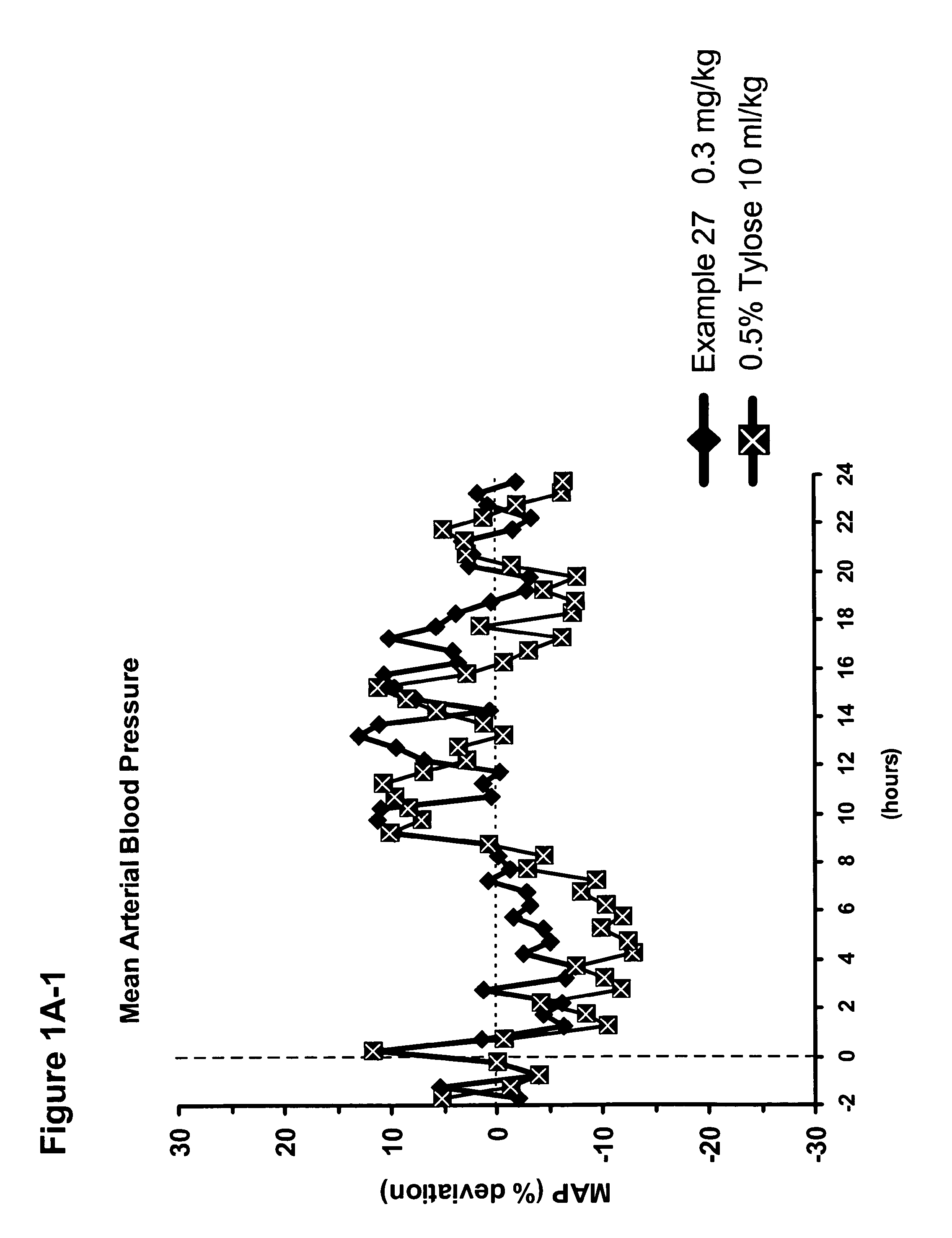Use of sGC stimulators, sGC activators, alone and combinations with PDE5 inhibitors for the treatment of systemic sclerosis (SSc).
a technology of sgc activator and sgc stimulator, which is applied in the direction of biocide, drug composition, peptide/protein ingredient, etc., can solve the problems of limited efficacy of therapies either used as stand alone treatment or combined, high morbidity and mortality of patients with end-stage ssc, and considerable side effects, etc., to achieve a broad antifibrotic
- Summary
- Abstract
- Description
- Claims
- Application Information
AI Technical Summary
Benefits of technology
Problems solved by technology
Method used
Image
Examples
example 1a
2,6-Dichloro-5-fluoronicotinamide
[0111]
[0112]A suspension of 25 g (130.90 mmol) of 2,6-dichloro-5-fluoro-3-cyanopyridine in conc. sulphuric acid (125 ml) was stirred at 60-65° C. for 1 h. After cooling to RT, the contents of the flask were poured into ice-water and extracted three times with ethyl acetate (100 ml each time). The combined organic phases were washed with water (100 ml) and then with saturated aqueous sodium hydrogen carbonate solution (100 ml), dried and concentrated on a rotary evaporator. The material obtained was dried under a high vacuum.
[0113]Yield: 24.5 g (90% of theory)
[0114]1H NMR (400 MHz, DMSO-d6): δ=7.95 (br s, 1H), 8.11 (br s, 1H), 8.24 (d, 1H).
example 2a
2-Chloro-5-fluoronicotinamide
[0115]
[0116]A suspension of 21.9 g (335.35 mmol) of zinc in methanol (207 ml) was admixed at RT with 44 g (210.58 mmol) of 2,6-dichloro-5-fluoronicotinamide. Then acetic acid (18.5 ml) was added and the mixture was heated with stirring at reflux for 24 h. Thereafter the contents of the flask were decanted from the zinc, and ethyl acetate (414 ml) and saturated aqueous sodium hydrogen carbonate solution (414 ml) were added, followed by intense extractive stirring. Subsequently the reaction mixture was filtered with suction over kieselguhr and the filter product was washed three times with ethyl acetate (517 ml each time). The organic phase was separated off and the aqueous phase was washed with ethyl acetate (258 ml). The combined organic phases were washed once with saturated aqueous sodium hydrogen carbonate solution (414 ml), dried and concentrated under reduced pressure. The resulting crystals were admixed with dichloromethane (388 ml) and extractivel...
example 3a
2-Chloro-5-fluornicotinonitrile
[0119]
[0120]A suspension of 46.2 g (264.66 mmol) of 2-chloro-5-fluoronicotinamide in dichloromethane (783 ml) was admixed with 81.2 ml (582.25 mmol) of triethylamine and cooled to 0° C. Then, with stirring, 41.12 ml (291.13 mmol) of trifluoroacetic anhydride were added slowly dropwise and the mixture was stirred at 0° C. for 1.5 h. The reaction solution was subsequently washed twice with saturated aqueous sodium hydrogen carbon solution (391 ml each time), dried and concentrated under reduced pressure.
[0121]Yield: 42.1 g (90% of theory).
[0122]1H NMR (400 MHz, DMSO-d6): δ=8.66 (dd, 1H), 8.82 (d, 1H).
PUM
 Login to View More
Login to View More Abstract
Description
Claims
Application Information
 Login to View More
Login to View More - R&D
- Intellectual Property
- Life Sciences
- Materials
- Tech Scout
- Unparalleled Data Quality
- Higher Quality Content
- 60% Fewer Hallucinations
Browse by: Latest US Patents, China's latest patents, Technical Efficacy Thesaurus, Application Domain, Technology Topic, Popular Technical Reports.
© 2025 PatSnap. All rights reserved.Legal|Privacy policy|Modern Slavery Act Transparency Statement|Sitemap|About US| Contact US: help@patsnap.com



